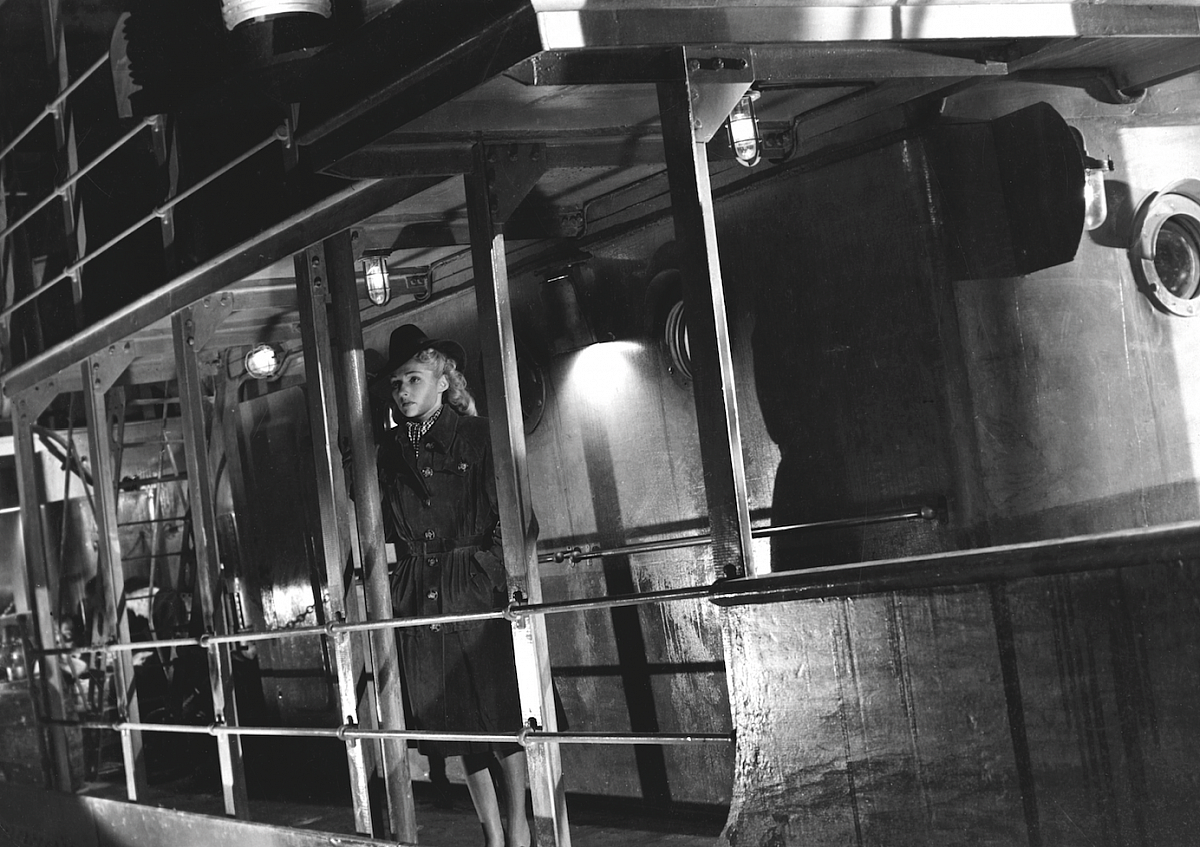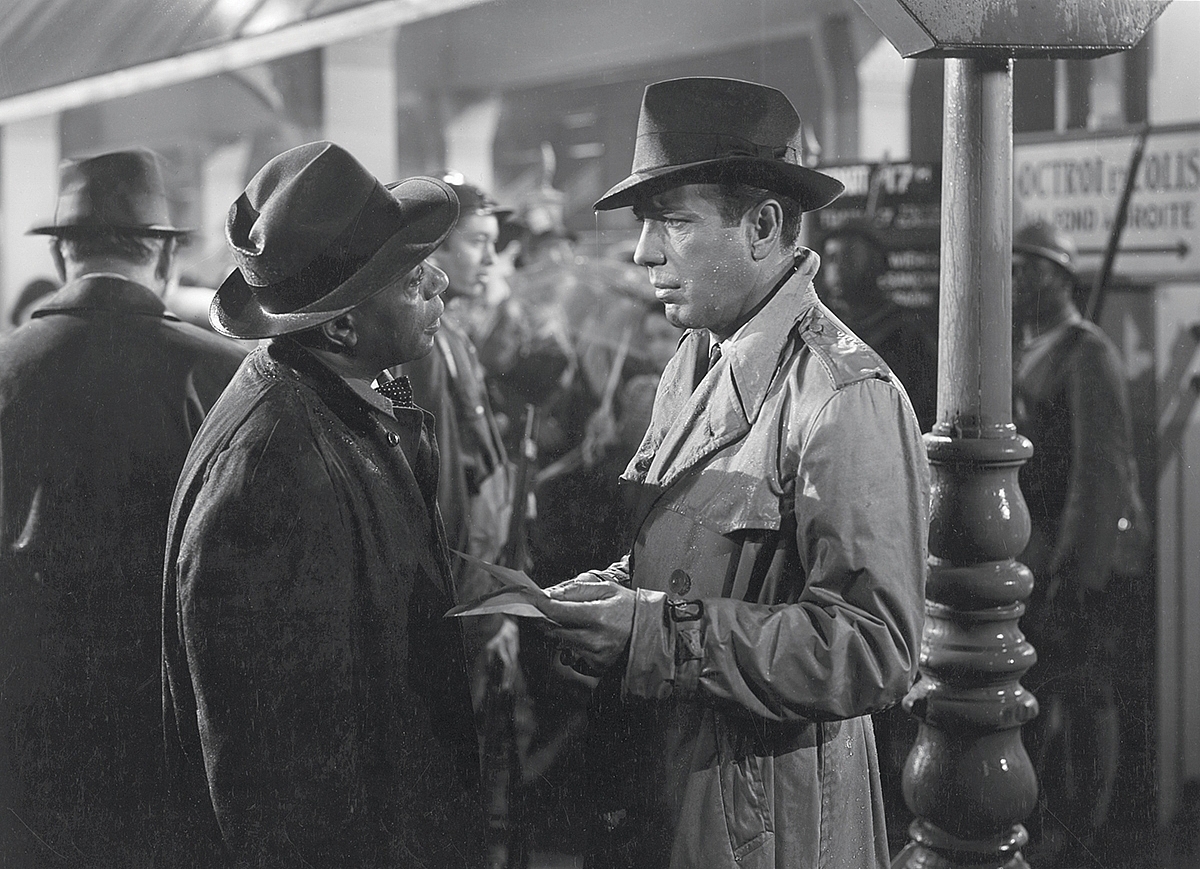The Show's the Thing

“There are very specific cinematic experiences that will carry with me forever. Seeing Charlie Chaplin in City Lights (Charles Chaplin, 1931) at an Italian Opera house, seeing How the West Was Won (John Ford, 1962) in true Cinerama. I want other people to have those kind of moments; to come away with a cinematic experience they are never going to forget.”
For Jared Case, head of collection information, research and access at the George Eastman Museum in Rochester, NY, nothing beats the feeling of the lights going down, the projector starting to whir and the screen flickering to life. Cinema as cinema was first conceived is where it’s at for Jared, nitrate filmstock and all.
Discovered by a German chemist in 1846, nitrate plastic was the first material to be used as stock for movie making. Made by boiling cotton with nitric acid then laying it out into thin, flexible, clear sheets, George Eastman saw the plastic’s potential in the 1880s, bringing it to market as a way of capturing and screening moving images.
From the ashes
And the world of cinema was born. New stories, ideas and imaginings illuminated audience’s faces for the first time as they smiled, laughed and cried at what they saw. But this magical substance had a downside. It was flammable. Highly flammable. The friction caused by a slightly worse for wear film pulling through a straining projector could be enough to set it on fire and once it caught, it would create its own oxygen. So there was no way to put it out. In the 1940s Kodak released an alternative ‘safety film’ and by 1952 the last piece of nitrate film rolled off the production line at the Kodak factory.

Movie watching may have entered a safer era, but for devotees like Jared, the world of cinema wasn’t necessarily better off for it. “I find a great difference in watching black and white nitrate film versus black and white safety film,” he explained. “I think a lot of it has got to do with the concentration of silver that’s in the emulsion. The definition, the clarity, the depth of image is so striking. Even something so ubiquitous as Casablanca (Michael Curtiz, 1942), you see it on nitrate film and you’re like ‘wow’.”

Copyright Vitagraph Inc. All Rights Reserved.
The unmatchable experience of watching nitrate film in a movie theater is what inspired Jared and his team at the George Eastman Museum to launch a festival celebrating this unique film stock in all its glory. First held in 2015, the Nitrate Picture Show champions the preservation and projection of nitrate film, introducing audiences to its beauty as a medium and opening up a dialogue about how we ensure that future generations continue to enjoy it. “The films we show at the festival are vital artworks. They represent the best presentation for films from that era and deserve to be seen in their intended form,” Jared continued. “There’s nothing else like the Nitrate Picture Show in the world right now. The fact that we are dedicating an entire span of time to not only nitrate projection, but the celebration of nitrate in film as an artifact is really significant.”
The definition, the clarity, the depth of image is so striking. Even something so ubiquitous as Casablanca – you see it on nitrate film and you’re like ‘wow’.
Freedom in limits
Concentrating on filmstock as a medium rather than shouting about specific titles has really defined the Nitrate Picture Show over the last three years and has liberated Jared when it comes to programming. The curatorial team works with archives worldwide to source a wide range of potential films to show, without a focus on director, genre or title. Why? “Well, there’s a limiting factor with nitrate film. If it hasn’t been correctly preserved there will be issues; lateral shrinkage, or cuppage, where the edges of the film come towards the image and it becomes very stiff and hard to focus, or dangerous and brittle as it goes through the film path,” Jared explained. “We get as many films as we can in as early as possible to test screen them or pre-screen them, but sometimes they won’t be good enough to show which is why we keep the programme a secret until the first day of the festival itself.”
Keeping the program under wraps helps the festival in “a myriad of ways,” according to Jared. It gives the team as long as possible to bring in some really great films, it keeps the focus on the material and the work that’s being done by institutions to ensure its been kept beautiful for the last 70-80 years, and it builds a sense of anticipation in the audience. “If you announce the titles, then you only talk about the titles,” he said. “Either its something someone hasn’t heard of – and they automatically think they won’t be interested – or it’s something they think they’ve already seen (although they won’t have, like this), like Casablanca. It’s been a challenge for us to promote the festival in this way, but it’s worth it.”
Building momentum
It really is. Audiences take to social media in the weeks before each festival trying to guess what the program will be, they lobby the team at the museum to get favorites on the bill and make suggestions of themes and films to explore at future events.
“The audience for the festival is different from any other. It’s a level of passion, curiosity and engagement that I haven’t seen elsewhere,” Jared said. “They’re the sort of people – a combination of film fans, industry professionals and culturally-engaged individuals – that will travel from across America, and the world, just to be here for one weekend in May to see nitrate projected. It’s such a call home for specific film fans to be welcomed into this atmosphere of people who all want to discuss, share and learn more about films.”
And the festival team responds with a program as eclectic and rich as the subject matter itself. With 55 years of cinema to choose from, Jared creates a program that showcases nitrate film at its finest. Whether it’s well-known feature films like you’ve never seen before orcolor shorts that make the eyes pop, the festival caters to all tastes from as many genres and eras as possible.
It’s such a call home for specific film fans, to be welcomed into this atmosphere of people who all want to discuss, share and learn more about films.
As you would expect from a festival that’s about so much more than just the films it shows, the Nitrate Picture Show does more than just screenings. Tours of the preservation vaults and equipment, talks from expert archivists and film historians flown in from Japan and Austria, the opportunity to touch and feel nitrate film for yourself (in controlled conditions, of course) are just a handful of the additional activities festival goers can take part in. “There’s something to said for that tactile experience, when you go to a museum and you’re sharing the same air as this artifact, that you can touch or come close to,” Jared said about the Nitrate Touch session at the festival, where people can pick up and handle the stock for themselves. “I always love hanging around that area to see the reaction people get from the experience.”
The passion Jared, his team and the audience at the festival have for both the projection and preservation of nitrate film is apparent. But in its three years of running, the Nitrate Picture Show has done more than just celebrate this unique artform. It’s actually started to change its future. “What has been a challenge for us has been re-educating institutions to look at their artifacts as projection material,” Jared explained. “Increasingly we’re seeing incredibly qualified colleagues from around the world looking at their collections in a different way and saying, ‘Is this something that can be projected? Is this something we can contribute?’”
And with the feedback loop in full swing, what the Festival team believed was a limited universe in terms of the films available to them is now much larger than they thought. “We’ve had so much collaboration and are working with so many archives now that in the future, we may actually look to expand the length of the festival itself,” Jared said. “These films do have a shelf life; they won’t be around forever. For some of the artifacts, that might be sooner rather than later. Why don’t we show them now so they can have that last gasp, that final screening people can attend, knowing that this is the last time this print is ever going to be shown?”
And so we’re back where we started. In the auditorium, with glee on our faces, absorbed by the depth of the image, startled by the contrast. Jared wouldn’t have it any other way. “I think if I wanted to boil the festival down to one thing, it would be cinematic experience, as close as possible to the original,” he said. “So film on film is important. Seeing it in a theater where there’s a certain size to it is important. The fact that it is immediate, that you can’t hit a pause button, that you’re sharing it with other people – it’s all important. This is the best way to see films released in 1951 or before. There’s nothing else to be said.”
We couldn’t agree more Jared.
MUST WATCH
With more and more nitrate film specialist screenings popping up, here are Jared’s top picks of nitrate films you shouldn’t miss. Seek them out, if you can.
"Casablanca" (Michael Curtiz, 1942)
“Despite the numerous times I had seen this film, it was a revelation to see a nitrate print off the original negative. There was so much more information on that print that I had never seen before, and the depth and detail brought the film to life again in a way I had never seen.”
"Alegretto" and "An Optical Poem" (Oskar Fischinger, 1936/38)
“Cinema has the power to overwhelm both physically and emotionally, and screening these two shorts brought me to the edge of tears with their immersive color palette and soundscape. An experience I will never forget.”
"Babes In Toyland"(Charley Rogers, Gus Meins, 1934)
“A great print can create a great experience, and I never responded to Laurel and Hardy the way that I did that day. Unfortunately, that was also the last time that print could ever be screened because, even with proper storage, the film shrinks to the point where it can't be used safely anymore. These prints are coming to the end of their shelf-life; each one we screen is a miracle of conservation and they need to be seen now, before the experience is lost.”
Find out more about the Nitrate Picture Show